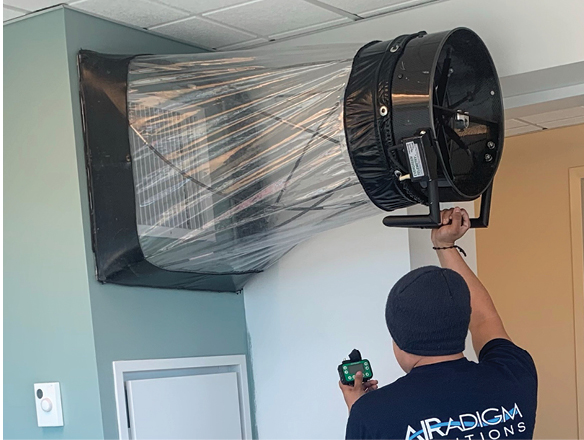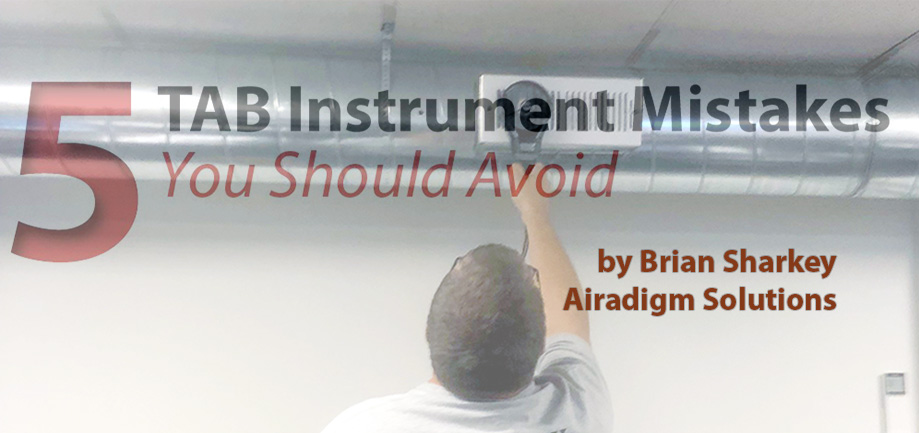Our industry thrives on the integrity of technicians taking accurate measurements. But when it comes to TAB (Testing, Adjusting, and Balancing), technicians don’t understand the instruments, or if they use them improperly, that can lead to collecting incorrect data. Bad data leads to HVAC systems that do not operate correctly.
When I’m teaching new air balancers at Airadigm Solutions, I make sure they understand the measurements they are obtaining, and I teach them to ask the question, ‘does this measured value make sense?’
Below is a list of some of the most common airside mistakes made by new technicians, and the recommendations I give our techs.
Instrument Mistake 1: Using Capture Hood to Measure Sidewall Grilles
I had a technician measure six sidewall grilles in the corridor of a school entrance. He chose to use a capture hood and reported reading 3500 cfm. This was well over the 2000 cfm design.

The measurement didn’t make any sense. The unit was located on the roof, two floors above the grilles. It seemed unlikely the engineer miscalculated the ductwork that much. Additionally, we were finding most of the other systems on this project had low airflow performance.
I instructed the technician to traverse the unit right before the grilles, and he measured 1950 cfm. This measurement made much more sense. We learned instrument mistake #1: capture hoods read higher on sidewall grilles.
The capture hood is an amazing instrument, and I believe the TAB industry would not be in such demand if these hoods were not accurate and easy to use.
But in the case of sidewall grilles, it failed to give the technician the right measurement. Why?
The capture hood typically uses a 16-point velocity grid to measure air velocity. The grid does not take 16 individual readings as you do with a traverse. Instead, the velocity grid has 16 holes that feed into a top (high) side chamber and 16 holes that feed into a bottom (low) side chamber.

This method is not the most accurate way of measuring
velocity from a sidewall grille.
The air blends together to give one high side reading and one low side reading. By mixing the air in the chamber, it does not capture a true average velocity.
A sidewall grille blows air out horizontally and tends to hit the velocity grid higher in some sections than others. For example, some sections could get zero or negative flows. The grid equalizes the pressure but doesn’t average it. This gives it higher, false velocity readings.
To properly read sidewall grilles, techs should traverse one sidewall grille and obtain a field derived Ak factor (ncilink.com/AKfactor). Once they have the Ak, they use a rotating vane anemometer (RVA) to determine the airflow per grille.
Click Below for the next page:













Recent Comments